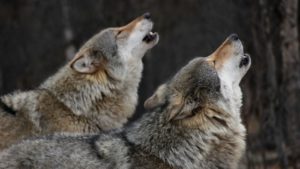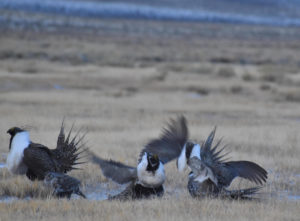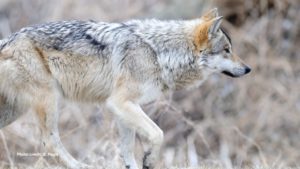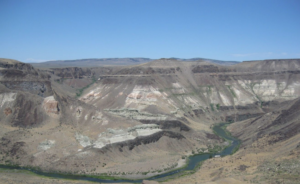For Immediate Release: June 17, 2020
Contact:
Ileene Anderson, Center for Biological Diversity, (323) 490-0223, ianderson@biologicaldiversity.org
Laura Cunningham, Western Watersheds Project, (775) -513-1280, lcunningham@westernwatersheds.org
Taylor Jones, WildEarth Guardians, (720) 443-2615, tjones@wildearthguardians.org
Declining Populations in California, Nevada Face Imminent Threats
SAN FRANCISCO – A coalition of conservation groups filed a formal notice today of their intent to sue the U.S. Fish and Wildlife Service for its failure to protect the imperiled Bi-State sage grouse population under the Endangered Species Act despite ongoing population declines. These genetically unique and isolated sage grouse inhabit an area along the California-Nevada border and face multiple threats to their survival and population declines are particularly acute at the northern and southern ends of the birds’ range.
“This is an example of politics trumping science while the extinction of a unique population of sage grouse hangs in the balance,” said Ileene Anderson, senior scientist at the Center for Biological Diversity. “As we have seen for more than a decade, voluntary measures are not enough; without the legal protections of the Endangered Species Act multiple threats continue to push the bi-state sage grouse closer to population collapse.”
The bi-state sage grouse is a geographically isolated and genetically distinct population of the greater sage grouse. It was originally proposed for listing as threatened in 2013, but the Fish and Wildlife Service abandoned the proposal in 2015. In 2018 a federal court foundthe agency had wrongly denied Endangered Species Act protection to the bi-state sage grouseand required the agency to re-evaluate the bird’s situation. In 2018, the bi-state sage grouse were again proposed for protection, but in 2020 the administration withdrew its proposal.
The service claims its reversal is based on a collection of voluntary conservation measures, but many of those measures have been in place for more than a decade while the sage grouse continued to decline.
“Most of the Bi-State sage grouse populations are tiny, isolated groups that are under imminent threat of winking out,” said Laura Cunningham, California director of Western Watersheds Project. “Instead of substantive legal protections for sage grouse habitat from livestock grazing and mining, the Trump administration is instead pushing removal of more and more old growth pinyon-juniper woodlands, that provides no benefit to the birds. The Service is utterly failing in its duty to preserve and protect sage grouse.”
“The U.S. Fish and Wildlife Service ignored major threats facing these rare birds,” said Taylor Jones, endangered species advocate with WildEarth Guardians. “The surviving Bi-State sage grouse subpopulations are tiny, isolated and face imminent threats. There is no credible excuse for denying them the protections of the Endangered Species Act.”
Sage grouse populations in the Bi-State area are isolated from each other by unsuitable habitats and now heavily developed basins. Overall the Bi-State sage grouse populations together are estimated to be no more than 3,305 birds, far below the 5,000-bird threshold scientists consider the minimum viable population for this distinct population of sage grouse.
Efforts to protect the birds, including flagging of barbed-wire fencing in cattle and sheep pastures in an attempt to mitigate sage grouse collisions, and vegetation treatments, have failed to stem population declines. Federal scientists predict localized extinctions in the north and south ends of the range. Scientists also estimate occupied habitat has decreased by more than 136,000 acres over the past 11 years.
The Bi-State sage grouse population is found on lands originally inhabited by the Washoe and Paiute peoples.
The conservation groups are Desert Survivors, the Center for Biological Diversity, Western Watersheds Project and WildEarth Guardians, and are represented by attorneys from the Center for Biological Diversity and the Stanford Law Clinic.
###
The Center for Biological Diversity is a national, nonprofit conservation organization with more than 1.7 million members and online activists dedicated to the protection of endangered species and wild places.
Western Watersheds Project in a nonprofit environmental conservation organization working to protect and restore wildlife and watersheds throughout the American West.
WildEarth Guardians is a conservation non-profit whose mission is to protect and restore the wildlife, wild places, wild rivers, and health of the American West.





